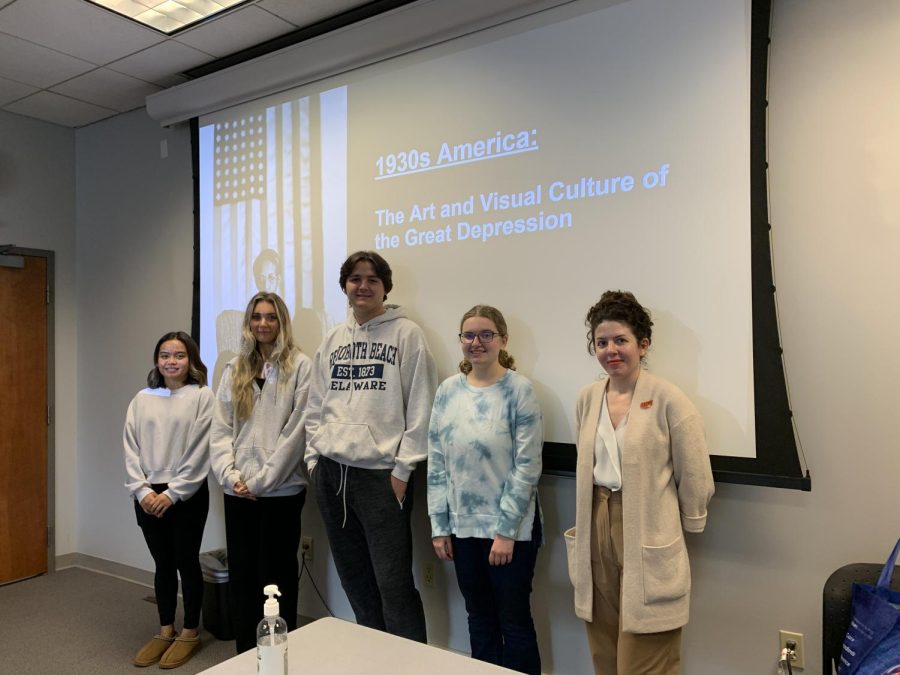Teachers collaborate to create paired, thematic courses
Students enrolled in a thematic learning community take two classes paired together with a common theme. Shown, professor Shana Cooperstein and her HUM 101 class, which is paired with a HIS 212 course.
December 8, 2022
Some students are taking two classes with the same classmates and a shared theme—even though the courses are in different academic departments.
Two professors can create a thematic learning community by collaborating to come up with a common theme, according to the program’s director, communications professor April Copes.
For example, the learning community “From Revolution to Reform” pairs Humanities 101, Introduction to Fine Arts, with History 212, U.S. History Since the Civil War, to examine how visual and literary arts affect social change and activism.
In a prior semester, a public speaking professor paired with an instructor teaching sports history. Next semester, an English professor and an anthropology teacher will offer a learning community exploring the concept of “home.”
Both classes have the same students and assignments that share the theme.
“Having the focus of two different classes [that] have the same theme like that, it’s like you’re studying for one while you’re doing the other,” said second-year business administration student Jason Scott, who took an English and public speaking learning community about the Broadway hit “Hamilton.” “Having themes that you liked made the learning easier.”
The college offered its first learning community in 2006, Copes said.
“They are, generally speaking, high-enrollment courses,” Copes added. “The professors collaborate to come up with a theme that they think will be interesting for students to learn about. … The content that they are required to teach in the courses is still foundational … however, the selection of the resources that they use, maybe the articles that they read, the videos they watch, the supplemental materials that they use, will be related to a particular theme.”
English professor Suzanne Spoor, who will teach the English portion of the learning community on “home,” said the format offers “lots of benefits for students.”
“One is that they are with the same students in both classes, so they get to know each other,” Spoor said. “I think the personal benefit is immediate. So there’s no reason not to try it.”
Scott said being interested in the theme improved his experience.
“I am good with English and writing,” Scott said. “But I don’t know if I would have scored as high of a grade as I did, having not been excited about the material.”
Some professors said they prefer teaching learning communities over individual classes.
“I think they’re fantastic,” said visual arts and humanities professor Shana Cooperstein, who teaches the arts section of the learning community about reform. “In the future I would love to see more [thematic learning communities] developed that specifically link fields that often are at odds with each other, like art and math, or art and science.”
English professor Alexa Landrus praised themed classes for allowing students to build their critical thinking and writing skills.
“I feel like the students are … in more command of their knowledge about a topic,” Landrus said. “I think that they are getting better critical reading skills, because they are studying and analyzing a sector of English or writing.”
Cooperstein said learning communities help students form better connections with their classmates.
“Learning communities really offer an important space for students to come together around a shared objective or research question,” Cooperstein said. “Really, [learning] communities are effective in that they create professional networks as well as more opportunities for intellectual growth.”












